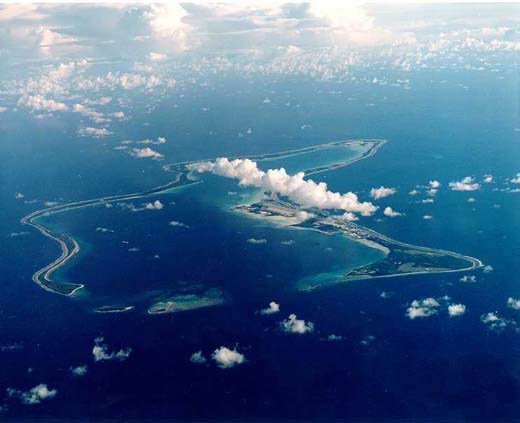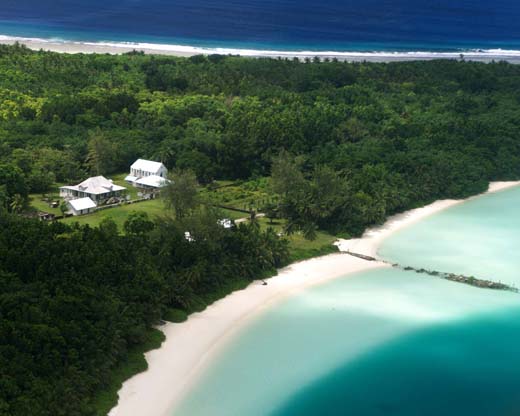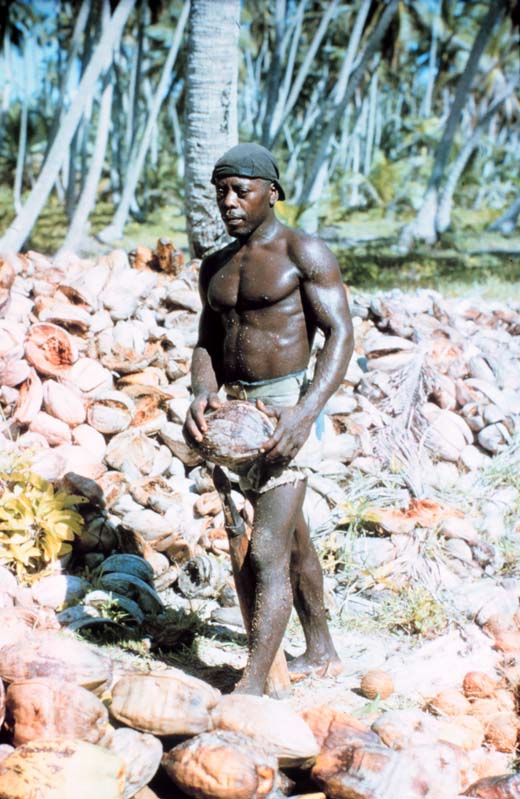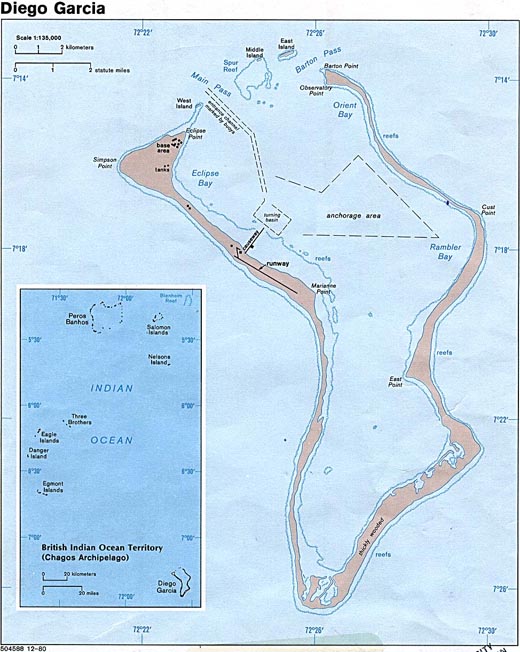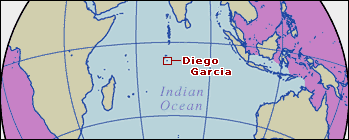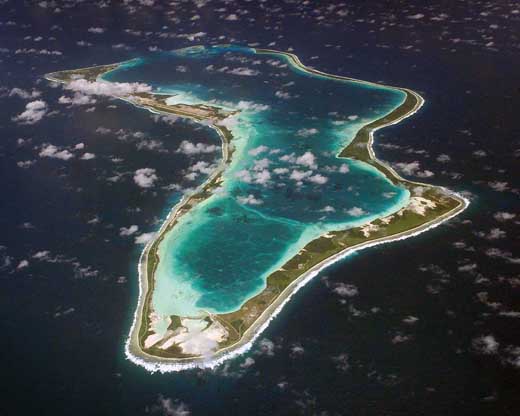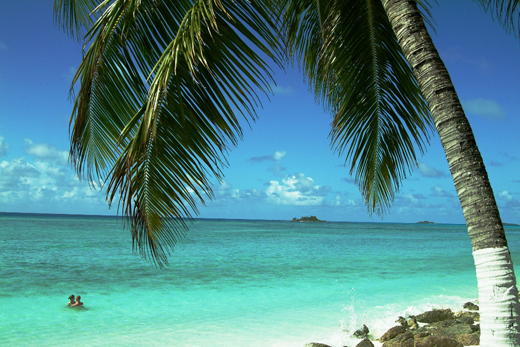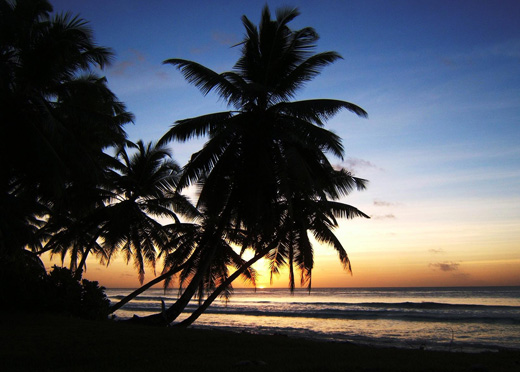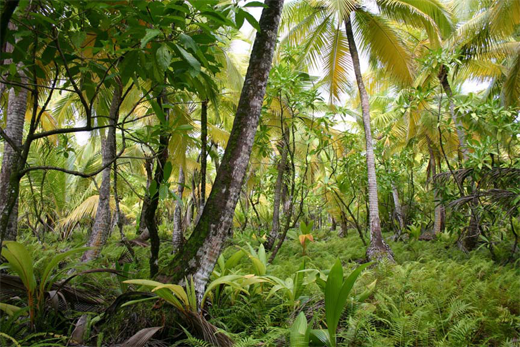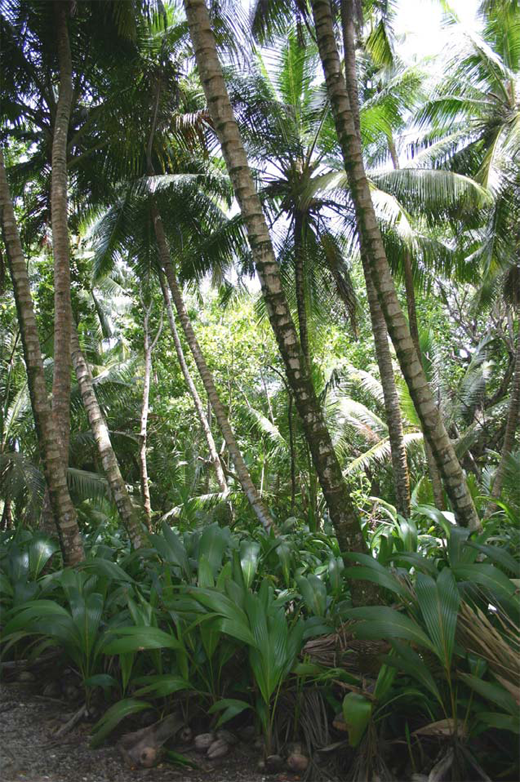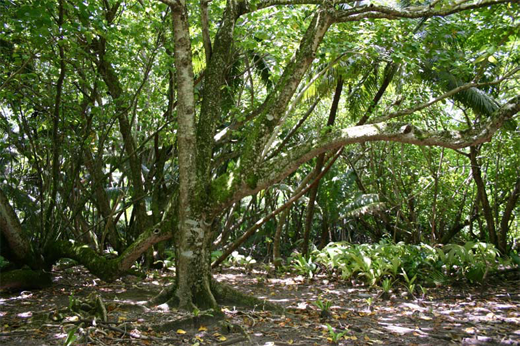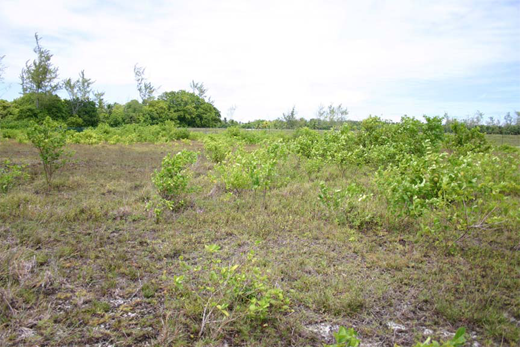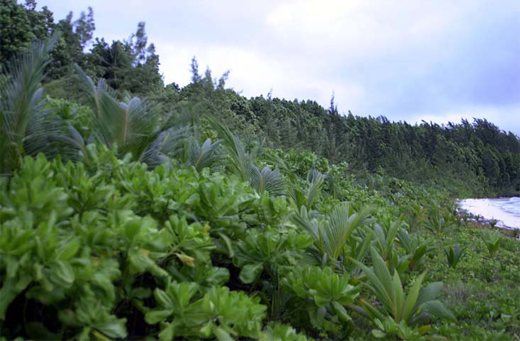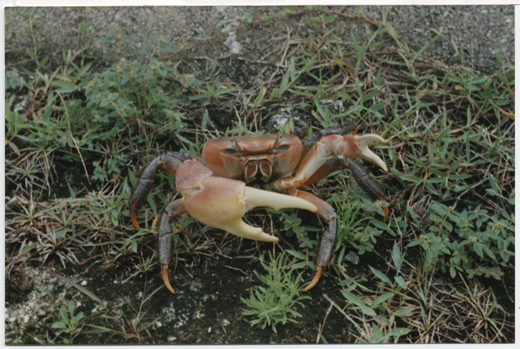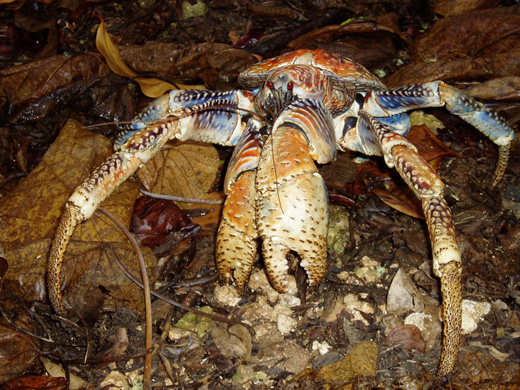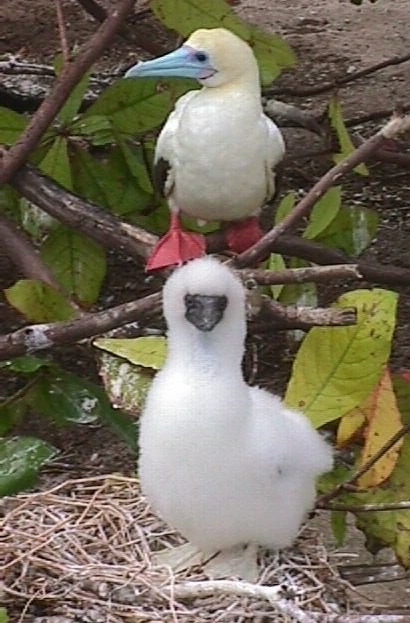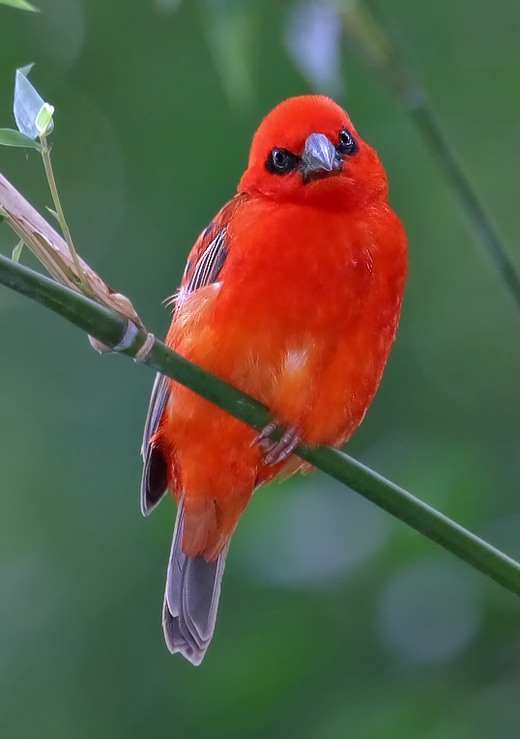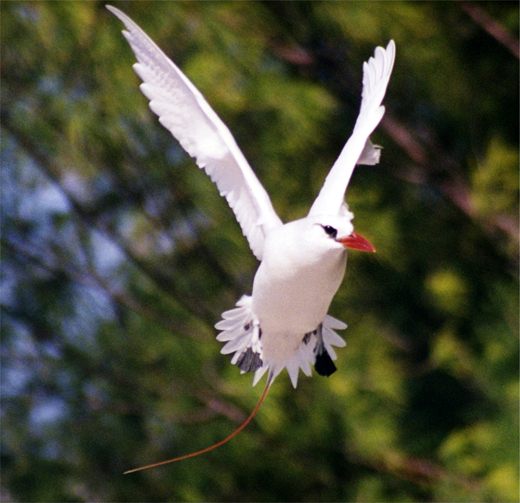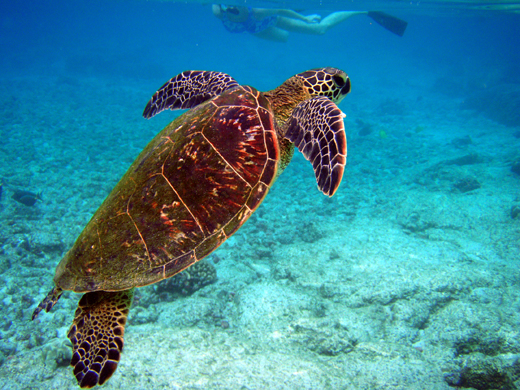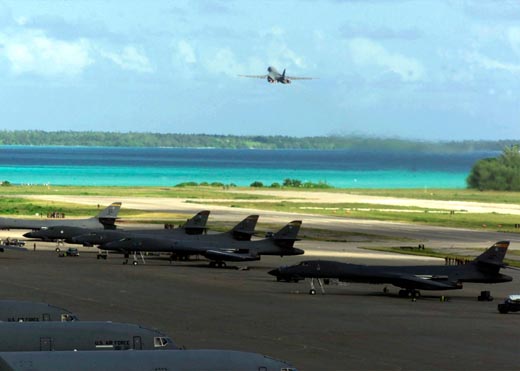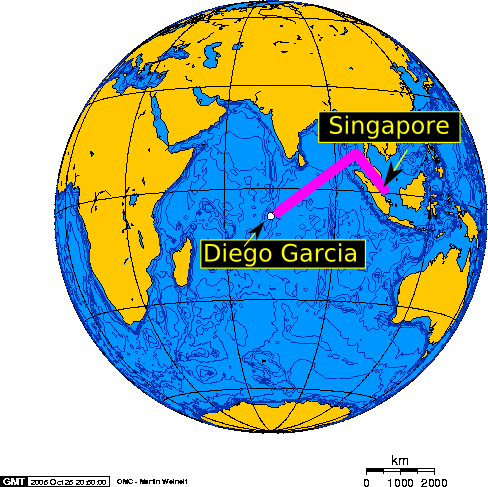Diego Garcia Nsf Airport
Mari Kenali Pengkalan Udara Diego Garcia???
Jika dilihatkan bagaimana transducer dan lain2 peralatan komunikasi pesawat MH370 telah dimatikan...
 Jika
dilihatkan bagaimana pergerakan pesawat malang tersebut yang melakukan
gerakan seperti mahu mengelak daripada dikesan radar selepas kali
terakhir perhubungan dengan menara kawalan....
Jika
dilihatkan bagaimana pergerakan pesawat malang tersebut yang melakukan
gerakan seperti mahu mengelak daripada dikesan radar selepas kali
terakhir perhubungan dengan menara kawalan....
Jika dilihat
bagaimana ....Kawasan yang dikatakan ianya mungkn terhempas di Lautan
Hindi yang jauh daripada laluan kapal2 dagang dan juga laluan
kapalterbang.....
Pasti siapapun tidak akan menolak bahawa misteri kehilangan pesawat MH370 ada kaitan dengan rampasan....
 Walau bagaimanapun kerana sehingga kini tiada pihak yang mengaku bertanggung-jawab motif pelakunya tidak dapat dipastikan.
Walau bagaimanapun kerana sehingga kini tiada pihak yang mengaku bertanggung-jawab motif pelakunya tidak dapat dipastikan. Suatu
yag agak pelik apabila pihak Indonesia dan pengkalan udara Deigo Gracia
juga tidak dapat mengesan pesawat tersebut kerana jika benar ianya
telah terhempas di Lautan Hindi 1200 batu nautika di sebelah Barat Laut
Australia pasti ianya telah melintasi ruang udara Indonesia untuk ke
sana daripada tempat terakhir ianya dikesan oleh radar TUDM (di Selat
Melaka) dan sebagai pengkalan tentera ,radar yang dimiliki oleh Diego
Gracia pasti mampu untuk mengesan pesawat tersebut.
Suatu
yag agak pelik apabila pihak Indonesia dan pengkalan udara Deigo Gracia
juga tidak dapat mengesan pesawat tersebut kerana jika benar ianya
telah terhempas di Lautan Hindi 1200 batu nautika di sebelah Barat Laut
Australia pasti ianya telah melintasi ruang udara Indonesia untuk ke
sana daripada tempat terakhir ianya dikesan oleh radar TUDM (di Selat
Melaka) dan sebagai pengkalan tentera ,radar yang dimiliki oleh Diego
Gracia pasti mampu untuk mengesan pesawat tersebut.
Jestru ada
baiknya kita mengetahui serba sedikit tentang pengkalan tentera udara
tersebut seperti lokasi, kapasiti, milik siapa, siapa yang
menguruskannya, sejarahnya dan lain-lain lagi. Sekadar untuk informasi.
Sumber klik sini.
Within the Chagos Archipelago — which also contains Peros Banhos, the Salomon Islands, the Three Brothers (islands), the Egmont Islands and the Great Chagos Bank — Diego Garcia is the largest land mass, being an atoll occupying approximately 174 square kilometres (67 sq mi), of which 27.19 square kilometres (10 sq mi) is dry land. The continuous portion of the atoll rim stretches 40 miles (64 km) from one end to the other, enclosing a lagoon 13 miles (21 km) long and up to 7 miles (11 km) wide, with a 4 miles (6 km) pass opening at the north. There are three small islands located in the pass.
Diego Garcia had no permanent inhabitants when discovered by Europeans in the 16th century and remained so until settled as a French colony in 1793. It was ceded, along with the rest of the Chagos Archipelago, to England in the Treaty of Paris (1814) at the conclusion of a portion of the Napoleonic Wars. Diego Garcia and the Chagos Archipelago were administered by the colonial government on the island of Mauritius until 1965, when the United Kingdom purchased them from the self-governing government of Mauritius for £3 millions, and declared them to be a separate British Overseas Territory. The BIOT administration was moved to the Seychelles following the Independence of Mauritius in 1968 until that the independence of the Seychelles in 1976, and from a Desk in the Foreign and Commonwealth Office in London since.
The primary industry throughout the island’s history consisted of Coconut plantations producing copra and/or coconut oil, until closure of the plantations and relocation of the inhabitants from Diego Garcia in October 1971. For a brief period in the 1880s it served as a coaling station for steamships transiting the Indian Ocean from the Suez Canal to Australia.
The vast majority of inhabitants of Diego Garcia throughout the period from 1793 - 1971 were plantation workers. There were several categories of workers, including Franco-Mauritian managers, Indo-Mauritian administrators, Mauritian and Seychellois contract employees, and in the late 19th Century some Chinese and Somali employees. From these workers, a significant group of inhabitants evolved into a distinct Creole culture called the Ilois, which means “Islanders” in French. The Ilois (now called Chagos Islanders or Chagossians) were descended primarily from slaves brought to the island from Madagascar by the French between 1793–1810, and Malay slaves from the slave market on Pulo Nyas, an island off the northwest coast of Sumatra from around 1820 until the slave trade finally ended following the Slavery Abolition Act of 1833. The Ilois also evolved a French-based Creole dialect now called Chagossian Creole.
All the inhabitants of Diego Garcia, regardless of ancestry or employment status, were forcibly relocated to other islands in the Chagos Archipelago, or to Mauritius or the Seychelles by 1971 to satisfy the requirements of a U.K./U.S. Exchange of Notes signed in 1966 to depopulate the island when the U.S. constructed a base upon it. This involuntary relocation decision remains in litigation as of 2010 (sources strongly recommended).
Since 1971, Diego Garcia and its territorial waters out to 3 nautical miles (6 km) have been restricted from public access without permission of the BIOT Government and is exclusively used as a military base, primarily by the United States. The U.S. operates a large naval ship and submarine support base, military air base, communications and space tracking facilities, and an anchorage for pre-positioned military supplies for regional operations aboard Military Sealift Command ships in the lagoon.
There are no endemic species of plants, birds, amphibians, reptiles, mollusks, crustaceans, or mammals on Diego Garcia or in the surrounding waters. There are several endemic fish and aquatic invertebrates. All plants, wildlife and aquatic species are protected to one degree or another. In addition, much of the lagoon waters are a designated RAMSAR site, and large parts of the island are nature preserves.
History
The islands were part of the group called in ancient times the Lakshadweepa (One Hundred Thousand Islands in Sanskrit) in Ancient India and were considered a part of the South Indian kingdoms.The island may have been visited during the Austronesian diaspora around 700 C.E., and some say the old Maldivian name for the islands was of Malagasy origin. It is also suggested that the Arabs who reached the Laccadive and Maldive island in around 900 C.E. may have visited the Chagos, and that Cheng Ho may have sailed close in 1413-1415 A.D. However, there is no evidence to date of any of these suppositions.
Portuguese explorers may have been the first Europeans to discover the island of Diego Garcia. The Portuguese navigator Pedro de Mascarenhas (1470–June 23, 1555) may have discovered the island during his voyage of 1512–13, but there is little corroborative evidence for this; cartographic analysis points to 1532 or later.
Tradition suggests that the island took its name from the same Diego García de Moguer who sailed to the Río de la Plata in 1526, and possibly with Hernando de Soto's voyage. García headed a Portuguese expedition in the Indian ocean in 1554 and died before completing the return travel. Some Portuguese scholars believe that the Christian name "Diego" of the island's discoverer was a misnomer or a misreading which came into use towards the end of the sixteenth century. Although the Cantino Planisphere (1504) and the Ruysch map (1507) clearly delineate the Maldives, giving them the same names, they show no islands to the south which can be identified as the Chagos archipelago.
The first map to delineate the island under its present name, Diego Garcia, is the World Map of Edward Wright (London 1599), possibly as a result of misreading Dio (or simply 'D.') as Diego, and Gratia as Garcia. The Nova Totius Terrarum Orbis Geographica of Henricus Hondius (Antwerp 1630) repeats Wright's misreading of the name, which is then proliferated on all subsequent Dutch maps of the period, and to the present day.
Diego Garcia and the rest of the Chagos islands were uninhabited until the late 18th century. In 1778 the French Governor of Mauritius granted Monsieur Dupuit de la Faye the island of Diego Garcia, and there is evidence of temporary French visits to collect coconuts and fish. Several Frenchmen living in "a dozen huts" abandoned Diego Garcia when the British East India Company attempted to establish a settlement there in April 1786. The supplies of the 275 settlers were overwhelmed by 250 survivors of the wreck of the British East Indian Ship ATLAS in May, and the colony failed in October. Following the departure of the English, the French colony of Mauritius began marooning lepers on Diego Garcia, and in 1793 the French established a coconut plantation using slave labour, which also exported cordage made from coconut fiber, and sea cucumbers, known as a delicacy in the orient. Diego Garcia became a colony of the United Kingdom after the Napoleonic wars, and from 1814–1965 it was administered from Mauritius. On Diego Garcia, the main plantations were located at East Point, the main settlement on the eastern rim of the atoll; Minni Minni, 4.5 kilometres (2.8 mi) north of East Point; and Pointe Marianne, on the western rim, all located on the lagoon side of the atoll rim. The workers lived at these locations, and at villages scattered around the island.
From 1881 through 1888, Diego Garcia was the location of two coaling stations for steam ships crossing the Indian Ocean.
In 1882, the French-financed, Mauritian-based Societe Huilere de Diego et Peros (the "Oil Can Company of Diego and Peros"), consolidated all the plantations in the Chagos under its control.
In 1914, the island was visited by the German light cruiser SMS EMDEN half-way through its historic commerce raiding cruise during the first months of World War I.
In 1942, the British established an Advanced Flying Boat base at the East Point Plantation, staffed and equipped from the 205 and 240 Squadrons, then stationed on Ceylon. Both Catalina and Sunderlands were flown during the course of World War II in search of Japanese and German submarines and surface raiders. Following the conclusion of hostilities, the base was closed on 30 April 1946.
In 1962, the Chagos Agalega Company of the British colony of the Seychelles purchased the Societe Huiliere de Diego et Peros and moved company headquarters to the Seychelles.
In the early 1960s, the U.K. was withdrawing its military presence from the Indian Ocean area, and agreed to permit the U.S. to establish a Naval Communication Station on one of its island territories there. The U.S. requested an unpopulated island belonging to the U.K. to avoid political difficulties with newly-independent countries, and ultimately the U.K. and U.S. agreed that Diego Garcia was a suitable location.
To accomplish the U.K./U.S. mutual defense strategy, in November 1965, the U.K. purchased the Chagos Archipelago, which includes Diego Garcia, from the then self-governing colony of Mauritius for £3 million to create the British Indian Ocean Territory (BIOT), with the intent of ultimately closing the plantations to provide the uninhabited British territory from which the U.S. would conduct its military activities in the region. On 30 December 1966, the U.S. and the U.K. executed an Agreement through an Exchange of Notes which permit the U.S. to use the BIOT for defense purposes for 50 years (through December 2016), followed by a 20 year optional extension (to 2036) to which both parties must agree by December 2014.
No monetary payment was made from the U.S. to the U.K. as part of this agreement, or any subsequent amendment, and the commonly used term "lease" to describe the U.S. use of Diego Garcia is not exactly correct. It is, rather, an approved occupation authorized through a sequence of diplomatic notes and agreements. However, in a now-declassified addendum to the 1966 agreement, the United Kingdom received a US$14M discount from the U.S. on the acquisition of submarine launched ballistic missile system Polaris missiles.
In April 1966 the British Government bought the entire assets of the Chagos Agalega Company in the BIOT for £600,000 and administered them as a government enterprise while awaiting U.S. funding of the proposed facilities, with an interim objective of paying for the administrative expenses of the new territory. However, the plantations, both under their previous private ownership and under government administration, proved consistently unprofitable due to the introduction of new oils and lubricants in the international marketplace, and the establishment of vast coconut plantations in the East Indies and the Philippines.
In March 1971, U.S. Naval construction battalions (SEABEES) arrived on Diego Garcia to begin the construction of the Communications Station and an airfield. To satisfy the terms of an agreement between the U.K. and the U.S. for an uninhabited island, the plantation on Diego Garcia was closed in October of that year. The plantation workers and their families, some of whom had been on Diego Garcia for generations, were relocated to the plantations on Peros Bahnos and Solomon atolls to the northwest; those who requested were transported to the Seychelles or Mauritius. In 1972, the U.K. decided to close the plantations throughout the Chagos, including those on Peros Banhos and the Salomon Islands, and deported the Ilois to their ancestral homes on either the Seychelles or Mauritius. The then-independent Mauritian government refused to accept the islanders without payment, and in 1973, the U.K. gave the Mauritian government an additional ₤650,000 to resettle the islanders.
By 1973, construction of the Naval Communications Station (NAVCOMMSTA) was completed. In the early 1970s, setbacks to U.S. military capabilities in the region including the fall of Saigon, victory of the Khmer Rouge in Cambodia, and the North Vietnamese invasion of Laos, the closure of the Peshawar Air Station listening post in Pakistan and Kagnew Station in Ethiopia, the Mayaguez Incident, and the build up of Soviet Naval presence in Aden and a Soviet Air Base at Berbera, Somalia, caused the U.S. to request, and the U.K. to approve, permission to build a fleet anchorage and enlarged airfield on Diego Garcia, and the SEABEES doubled the number of workers constructing these facilities.
Following the fall of the Shah of Iran and the Iranian Hostage Crisis in 1979-1980, the West became concerned with ensuring the flow of oil from the Persian Gulf through the Straight of Hormuz, and the U.S. received permission for a $400 million expansion of the military facilities on Diego Garcia consisting of two parallel 12000-foot-long (0 m) (3657.6 m)runways, expansive parking aprons for heavy bombers, twenty new anchorages in the lagoon, a deep water pier, port facilities for the largest naval vessels in the U.S. or British fleet, aircraft hangars, maintenance buildings and an air terminal, a 1,340,000 barrel fuel storage area, and billeting and messing facilities for thousands of sailors and support personnel.
On 1 October 1977, Naval Support Facility, Diego Garcia, was established at the senior U.S. Navy command on the island. At the time the NAVCOMMSTA was the primary tenant, but as the new major facilities were completed, most notably the expanded anchorage and mooring area and the extended airfield, other tenants were commissioned.
In 1980, the U.S. Navy established the Near-Term Prepositioned Force of 16 ships. Then NTPF became the Afloat Prepositioning Force (AFP) and eventually Composite Squadron Two (COMPSRON 2) consisting of 20 deep-water pre-positioned logistics ships anchored in the lagoon.
In 1981, the Naval Air Facility was commissioned. It was decommissioned in 1987 and its responsibilities returned to the NSF.
In 1982, Construction activities were transferred from the SEABEES to a consortium of civilian contractors, and the majority of the projects were completed by 1988. On 26 March 1982, Barbara Shuping and five other women were assigned to the NSF. Prior to this assignment, no women had lived on island since those on the plantation in 1971.
In 1985, the new port facilities were completed, and the USS SARATOGA (CV-60) was the first aircraft carrier to tie up.
The Strategic Air Command began deploying B-52 bombers and aerial refueling aircraft to the newly completed airfield facilities in 1987.
Following the Iraqi invasion of Kuwait in August 1990, three ships of COMPSRON 2 sortied, delivering a Marine Expeditionary Brigade to defend the Kingdom of Saudi Arabia. Other COMPSRON 2 ships offloaded the munitions, bombs, and fuel on Diego Garcia that were required for the U.S. bomber fleet that deployed to airfield. Subsequently, B-52G bombers flew more than 200 17-hour bombing missions over 44 days and dropped more than 800,000 tons (727,300,000 kilograms [kg]) of bombs on Iraqi forces in Iraq and Kuwait. One of the B-52s crashed from mechanical failures just north of the island with the loss of three of its six-man crew.
Beginning on 7 October 2001, the U.S. again commenced military operations from Diego Garcia using B-1, B-2, and B-52 bombers to attack enemy targets in Afghanistan following the attacks on New York City and the Pentagon. A B-1 bomber was lost on 12 December 2001 to mechanical failures just after take off from the island, but the crew survived and was rescued by the USS RUSSELL (DDG-59). Combat operations resumed in the spring of 2003, with MPSRON TWO sortieing to the Persian Gulf for Operation Iraqi Freedom, and bombing operations began again, this time against Iraq. Bomber operations ceased from Diego Garcia on 15 August 2006.
In 2004, the U.K. applied for, and received, Ramsar Site status for the lagoon and other waters of Diego Garcia.
On 1 April 2010, the U.K. Cabinet declared the Chagos Archipelago a Marine Protected Area and prohibited all extractive industry including fishing and oil and gas exploration. It is unclear whether Diego Garcia is included in the MPA.
Inhabitants
Throughout the recorded history of the plantations of the Chagos Archipelago, there existed a population of approximately one thousand individuals, with about two-thirds resident on Diego Garcia. A peak population of 1,142 on all islands was recorded in 1953. Those workers born in the Chagos were referred to as Ilois, a French Creole word meaning "Islanders" until the late 1990s, when they adopted the name Chagossians or Chagos Islanders. The Chagossians are descended from slaves brought to the island by the French from Madagascar, Malay slaves from the island of Pulo Nyas off the northwest coast of Sumatra imported between 1820–1840, Mauritian, Seychellois, Chinese, Somali, and Indian workers employed on the island at various times in the late 19th Century and early 20th Century, as well as Plantation managers and administrators, and British and Indian garrison troops stationed on the island in World War II.The total population of the atoll was removed by 1971 to facilitate the establishment of the military base. No current agreement exists on how many of the evacuees met the criteria to be an Ilois, and thus be an indigenous person at the time of their removal, but the U.K. and Mauritian governments agreed in 1972 that 426 families, numbering 1,151 individuals were due compensation payments as exiled Ilois. The total number of people certified as Ilois by the Mauritian Government's Ilois Trust Fund Board in 1982 was 1,579.
Between 1971 and 2001, the only residents on Diego Garcia were U.K. and U.S. military personnel and civilian employees of those countries. These included contract employees from the Philippines and Mauritius, including some Ilois. During the combat operations from the atoll against Afghanistan (2001–2006) and Iraq (2003–2006) a number of allied militaries were based on the island including Australian, Japanese and the Republic of Korea.
The inhabitants today do not rely on the island and the surrounding waters for sustenance. Although some recreational fishing for consumption is permitted, all other food is shipped in by sea or air.
Politics
Diego Garcia is the largest and only inhabited island in the British Indian Ocean Territory, usually abbreviated as “BIOT”. It is an Overseas territory of the United Kingdom, and the Government of the BIOT consists of Commissioner appointed by the Queen. The Commissioner is assisted by an Administrator and small staff, and is based in London and resident in the Foreign and Commonwealth Office. This administration is represented in the Territory by the Officer commanding British Forces on Diego Garcia, the "Brit Rep". Laws and regulations are promulgated by the Commissioner and enforced in the BIOT by Brit Rep.There are no civilian residents or administrators, and the U.K. represents the Territory internationally. A local government as normally envisioned does not exist.
Of major concern to the BIOT Government is the relationship with the U.S. military forces resident on Diego Garcia. An annual meeting called “The Pol-Mil Talks” (for Political-Military) of all concerned is held at the Foreign and Commonwealth Office in London to resolve pertinent issues. These resolutions are formalized by an “Exchange of Notes”, or, since 2001, an “Exchange of Letters”.
There are two transnational political issues which affect Diego Garcia and the BIOT, through the British government.
First, the island nation of Mauritius claims the Chagos Archipelago (which is co-terminus with the BIOT), including Diego Garcia. A subsidiary issue is the Mauritian opposition to the 1 April 10 U.K. Government’s declaration that the BIOT is a Marine Protected Area with fishing and extractive industry (including oil and gas exploration) prohibited.
Second, the issue of compensation and repatriation of the former inhabitants, exiled since 1973, continues in litigation and as of this writing (23 August 2010) has been submitted to the European Court of Human Rights by a group of former residents.
As these issues affect the BIOT as a whole, not just the island of Diego Garcia, they are more appropriately and completely addressed in the Wikipedia articles British Indian Ocean Territory and Depopulation of Diego Garcia.
Two other issues concern the U.S. base on Diego Garcia - the allegation that a prison camp for Islamic terrorists exists either on the atoll itself, or in U.S. ships anchored in the lagoon, and the extent of Extraordinary Rendition Flights through the U.S. airfield on the atoll.
- Prison Site Allegations
Manfred Nowak, one of five of the United Nations Special Rapporteur on torture, says that credible evidence exists supporting allegations about the use of Diego Garcia as a prison black site for alleged terrorists. The human rights group Reprieve, alleges that US-operated ships moored outside the territorial waters of Diego Garcia were used to incarcerate and torture detainees.
- Rendition Flight Refueling Admission
Geography
The island consists of the largest continuous atoll in the world. The dryland rim varies in width from a few hundred metres to 2.4 km. Typical of coral atolls, it has a maximum elevation on some dunes on the ocean side of the rim of just nine metres (30 ft) above mean low water. The rim nearly encloses a lagoon about 19 kilometres (12 mi) long and up to 8 kilometres (5.0 mi) wide. The atoll forms a nearly complete rim of land around a lagoon, enclosing 90 percent of its perimeter, with an opening only in the north. The main island is the largest of about sixty islands which form the Chagos Archipelago. Besides the main island, there are three small islets at the mouth of the lagoon: West Island (3.4 ha/8.4 acres); Middle Island (6 ha/14.8 acres); and East Island (11.75 ha/29 acres). A fourth island shown on some maps, Anniversary Island one km (1,100 yards) southwest of Middle Island, appears as just a sand bar on satellite images. Both Middle Island and Anniversary Island are part of the Spur Reef complex.The total area of the atoll is 65.6 square miles (170 km). The lagoon area is 47.9 square miles (120 km) with depths ranging down to 80 feet (25 m). The total land area (excluding peripheral reefs) is 11.6 square miles (30 km). The coral reef surrounding the seaward side of the atoll is generally broad, flat, and shallow at about 3 feet (1 m) below mean sea level in most locations and varying from 300 to 650 feet (100 to 200 m) in width. This fringing seaward reef shelf comprises an area of approximately 13.61 square miles (35.2 km). At the outer edge of the reef shelf, the bottom slopes very steeply into deep water, at some locations dropping to more than 1,500 feet (457 m) within 0.6 miles (1 km) of the shore.
In the lagoon, numerous coral heads present hazards to navigation. The shallow reef shelf surrounding the island on the ocean side offers no ocean-side anchorage. The channel and anchorage areas in the northern half of the lagoon are dredged, along with the pre-1971 ship turning basin. Significant salt-water wetlands called barachois exist in the southern half of the lagoon. These are small lagoons off of the main lagoon, filled with seawater at high tide and dry at low tide. Scientific expeditions in 1996 and 2006 described the lagoon and surrounding waters of Diego Garcia, along with the rest of the Chagos Archipelago, as "exceptionally unpolluted" and "pristine".
Diego Garcia is frequently subject to earthquakes caused by tectonic plate movement along the Carlsberg Ridge located just to the west of the island. One was recorded in 1812; one measuring 7.6 on the Richter Scale hit on November 30, 1983 at 21:46 local time and lasted 142 seconds, resulting in a small tsunami which raised wave height in the lagoon to 1.5 metres (5 ft), and another on December 2, 2002, an earthquake measuring 4.6 on the Richter Scale struck the island at 12:21 a.m.
In December 2004, a tsunami generated near Indonesia caused some shoreline erosion on Barton Point (the northeast point of the atoll of Diego Garcia).
Oceanography
Diego Garcia lies within the influence of the South Equatorial current year-round. The surface currents of the Indian Ocean also have a monsoonal regime associated with the Asian Monsoonal wind regime. Sea surface temperatures are in the range of 80-84 °F/26-28 °C year-round.Ghyben-Herzberg (Fresh Water) Lenses on Diego Garcia
Diego Garcia is the above-water rim of a coral atoll composed of Holocene coral rubble and sand to the depth of about 36 metres (120 ft), overlaying Pleistocene limestone deposited at the then-sea level on top of a seamount rising approximately 1,800 metres (6,000 ft) from the floor of the Indian Ocean. The Holocene sediments are porous and completely saturated with sea water. Any rain falling on the above-water rim quickly percolates through the surface sand and encounters the salt water underneath. Diego Garcia is of sufficient width to minimise tidal fluctuations in the aquifer, and the rainfall (in excess of 102.5 inches/260 cm per year on average) is sufficient in amount and periodicity for the fresh water to form a series of convex, fresh-water, Ghyben-Herzberg lenses floating on the heavier salt water in the saturated sediments.The horizontal structure of each lens is influenced by variations in the type and porosity of the sub-surface deposits, which on Diego Garcia are minor. At depth, the lens is globular; near the surface it generally conforms to the shape of the island. When a Ghyben-Herzberg lens is fully formed, its floating nature will push a freshwater head above mean sea level, and if the island is wide enough, the depth of the lens below mean sea level will be 40 times the height of the water table above sea level. On Diego Garcia this equates to a maximum depth of 20 metres. However, the actual size and depth of each lens is dependent on the width and shape of the island at that point, the permeability of the aquifer, and the equilibrium between recharging rainfall and losses to evaporation to the atmosphere, transpiration by plants, tidal advection, and human use.
In the Plantation period, shallow wells, supplemented by rainwater collected in cisterns, provided sufficient water for the pastoral life style of the small population. On Diego Garcia today, the military base uses over 100 shallow “horizontal” wells to produce over 560,000 liters per day from the “Cantonment” lens on the northwest arm of the island - sufficient water for western-style usage for a population of 3,500. It is estimated that this 3.7 km2 lens holds 19 million m3 of fresh water and has an average daily recharge from rainfall of over 10,000 m3, of which 40% remains in the lens and 60% is lost through evapotranspiration.
Extracting fresh water from a lens for human consumption requires careful calculation of the sustainable yield of the lens by season because each lens is susceptible to corruption by salt-water intrusion caused by overuse or drought. In addition, overwash by tsunamis and tropical storms has corrupted lenses in the Maldives and several Pacific islands. Vertical wells can cause salt upconing into the lens, and over-extraction will reduce fresh water pressure resulting in lateral intrusion by seawater. Because the porosity of the surface soil results in virtually zero runoff, lenses are easily polluted by fecal waste, burials, and chemical spills. Corruption of a lens can take years to “flush out” and reform, depending on the ratio of recharge to losses.
There are a few natural depressions on the atoll rim that capture the abundant rainfall to form areas of fresh-water wetlands. Two are of significance to island wildlife and to recharge their respective fresh-water lenses. One of these is centered on the northwest point of the atoll, another is found near the Point Marianne Cemetery on the southeast end of the airfield. Other, smaller freshwater wetlands are found along the east side of the runway, and in the vicinity of the receiver antenna field on the northwest arm of the atoll.
There are also several man-made fresh-water ponds resulting from excavations made during construction of the airfield and road on the western half of the atoll rim. These fill from rainfall and from extending into the Ghyben-Herzberg lenses found on this island.
Climate
Precipitation: All precipitation falls as rain, characterised by air-mass type showers. Annual rainfall averages 260 cm (102 inches), with the heaviest precipitation from October to February. January is the wettest month with 25 cm (14 in.) of rain, with August the driest month, averaging 100 mm (4.2 in) of rain.Temperatures: The surrounding sea surface temperature is the primary climatic control and temperatures are generally uniform throughout the year, with an average maximum of 31 °C (88 °F) by day during March and April, and 29 °C (84 °F) in July through September. Diurnal variation is approximately 3-4 °C (10 °F), falling to the low 20s °C (70 °F) by night. Humidity is high throughout the year. The almost constant breeze keeps conditions reasonably comfortable.
Winds: From December through March, winds are generally westerly at approximately 6 knots (11 km/h). During April and May winds are light and variable, ultimately backing to a east-southeasterly direction. From June through September the influence of the Southeast trades is felt, with speeds of 10-15 knots. During October and November winds again go through a period of light and variable conditions veering to a westerly direction with the onset of summer in the Southern Hemisphere.
Thunderstorms: Activity is generally noticed during the afternoon and evenings during the summer months (December through March) and when the Intertropical Convergence Zone is in the vicinity of the island.
Diego Garcia is at minimum risk from tropical cyclones due to its proximity to the equator where the coriolis parameter required to organize circulation of the upper atmosphere is minimal. However, some low-intensity storms have hit the island, including in 1901, which blew over 1,500 coconut trees, on September 16, 1944 which caused the wreck of a Royal Air Force PBY Catalina, September 1990 which demolished the tent city then being constructed for USAF bomber crews during Operation Desert Storm, and on July 22, 2007 when winds exceeded 60 knots (110 km/h) and over 10 inches (250 mm) of rain fell in 24 hours.
The island was somewhat affected by the tsunami caused by the 2004 Indian Ocean earthquake. Service personnel on the western arm of the island reported only a minor increase in wave activity. The island was protected to a large degree by its favourable ocean topography. About 80 km (50 mi) east of the atoll lies the 650 km (400-mile) long Chagos Trench, an underwater canyon plunging more than 4,900 m (16,000 ft). The depth of the trench and its grade to the atoll's slope and shelf shore makes it more difficult for substantial tsunami waves to build before passing the atoll from the east. In addition, near shore coral reefs and an algal platform may have dissipated much of the waves' impact. A biological survey conducted in early 2005 indicated erosional effects of the tsunami wave on Diego Garcia and other islands of the Chagos Archipelago. One 200-to-300-metre (220 to 330 yd) stretch of shoreline was found to have been breached by the tsunami wave, representing approximately 10 percent of the eastern arm. A biological survey by the Chagos Conservation Trust reported that the resulting inundation additionally washed away shoreline shrubs and small to medium size coconut palms.
Vegetation
The first botanical observations of the island were made by Hume in 1883, by which time the coconut plantations had been in operation for a full century. Subsequent studies and collections during the Plantation Era were made in 1885, 1905, 1939, and 1967. Thus, very little of the nature of the pre-contact vegetation is known.The 1967 survey, published by The Smithsonian is used as the most authoritative baseline for more recent research. These studies indicate the vegetation of the island may be changing rapidly. For example, J.M.W. Topp collected data annually between 1993–2003 and found that on the average three new plant species arrived each year, mainly on Diego Garcia. His research added fully a third more species to Stoddart. Topp and Martin Hamilton of Kew Gardens compiled the most recent checklist of vegetation in 2009, which can be found at this footnote.
In 1967, Stoddart described the land area of Diego Garcia as being is dominated by a littoral hedge of Scaevola taccada while inland Cocos nucifera (Coconut) was the most dominant tree, covering most of the island. The substory was either managed and park-like, with understory less than 0.5 metres in height, or consisted of what he called “Cocos Bon-Dieu”, an intermediate story of juvenile trees, and a luxuriant ground layer of self-sown seedlings, causing those areas to be relatively impenetrable.
There are also areas of remnant tropical hardwood forest at the sites of the plantation-era villages, as well as Casuarina equisetifolia (Iron Wood Pines) woodlands.
In 1997, the U.S. Navy contracted a vegetation survey and identified about 280 species of terrestrial vascular plants on Diego Garcia. None of these were endemic, and another survey in 2005 identified just 36 species as “native”, meaning arriving without the assistance of humans, and found elsewhere in the world. No terrestrial plant species are any of conservation concern at present.
Of the 36 native vascular plants on Diego Garcia, there are 12 trees, five shrubs, seven dicotyledon herbs, three grasses, four vines and five ferns.
The twelve tree species are: Barringtonia asiatica (Fish-poison Tree), Calophyllum inophyllum (Alexandrian Laurel), Cocos nucifera, Cordia subcordata, Guettarda speciosa, Intsia bijuga, Hernandia sonora, Morinda citrifolia, Neisosperma oppositifolium, Pisonia grandis, Terminalia catappa, and Heliotropium foertherianum. Another three trees are common, and may be native, but may also have been introduced by humans: Casuarina equisetifolia, Hibiscus tiliasceus, and Pipturus argenteus.
The five native shurbs are: Caesalpinia bonduc, Pemphis acidula, Premna serratifolia, Scaevola taccada (often mispronounced “Scaveola”), and Suriana maritima.
There are also 134 species of plants classified as “weedy” or “naturalised alien species”, being those unintentionally introduced by man, or intentionally introduced as ornamentals or crop plants which have now “gone native”, including 32 new species recorded since 1995, indicating a very rapid rate of introduction. The remainder of the species list consists of cultivated food or ornamental species, most grown in exceedingly restricted environments, some consisting of a single individual in a planter’s pot.
In 2004, there were 10 recognised plant communities on atoll rim:
1. Calophyllum Forest, dominated by Calophyllum inophyllum, with trunks that can grow in excess of 2 metres in diameter. This forest often contains other species such as Hernandia sonora, Cocos nucifera and Guettarda speciosa with a Premna obtusifolia edge. When found on the beaches, Calophyllum often extends over the lagoon water and supports nesting red-footed boobies, as does Barringtonia asiatica. Found mostly on the eastern arm of the atoll.
2. Cocos Forest, essentially monotypic ("Cocos bon Dieu"), with the understory consisting of Cocos seedlings.
3. Cocos-Hernandia Forest, dominated by two canopy species - Cocos nucifera and Hernandia sonora.
4. Cocos-Guettarda Forest, dominated by the canopy species Cocos nucifera and Guettarda speciosa. The understory consists of a mix of Neisosperma oppositifolium, with Scaevola taccada and Tournefortia argentea on the beach edge.
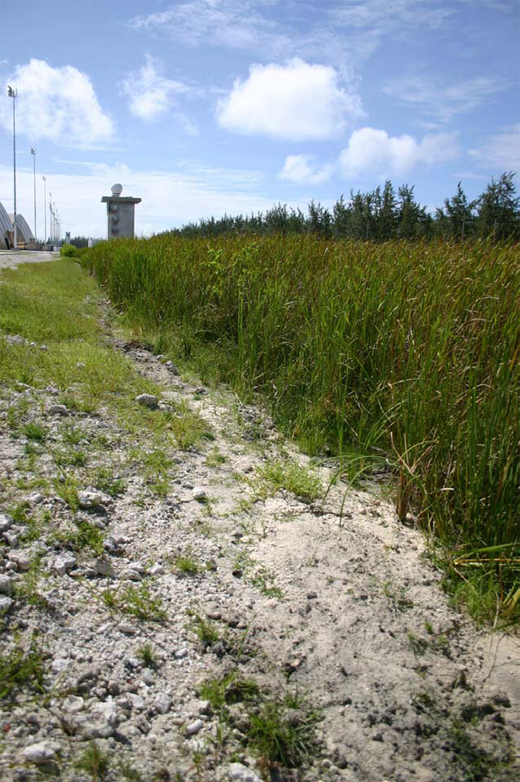 |
| A freshwater marsh composed of nothing but Cattails. This is located on the eastern edge of the bomber ramp on Diego Garcia. |
6. Premna shrubland, occurring generally between marshy areas and forested areas. The most conspicuous vegetation is primarily Premna obtusifolia, with Casuarina equisetifolia and Scaevola taccada on the margins. The dense groundcover consists of species such as Fimbristylis cymosa, Ipomoea pescaprae (Beach Morning Glory) and Triumfetta procumbens. Premna shrubland appears mostly adjacent to the developed areas of the atoll, particularly in the well fields.
7. Littoral Scrub lines almost the entire seashore and lagoon shore of the island. It is dominated by Scaevola taccada, but also contains scattered coconut trees, Guettarda speciosa and Pisonia grandis. On the seaward side, it also contains Tournefortia argentea and Suriana maritima. On the lagoon side, it may also contain Lepturus repens, Triumfetta procumbens and Cyperus ligularis. There are also large pockets of Barringtonia asiatica on the eastern edge of the lagoon.
8. Maintained areas of grass and sedges routinely mowed. Aerial photographs of the island clearly display large areas of grasslands and park-like savanna upon which the U.S. military has constructed large outdoor facilities such as antenna fields and the airport.
9. Mixed Native Forest, with no dominant canopy species.
10. Marshes divided into three different types: Cattail (Typha domingensis), wetland, and mixed species. Cattail marshes contained almost entirely cattails. These areas are often man-made reservoirs or drainages that have been almost entirely monotypic. Wetlands were based upon vegetation that occurred in the area, with some amount of fresh water. Mixed species marshes were highly variable and usually had no standing water.
Wildlife
All the terrestrial and aquatic fauna of Diego Garcia are protected, with the exception of certain game fish, rats and cats; hefty fines are levied against violators.CRABS. The island is a haven for several types of crab; "Warrior Crabs" (Cardisoma carnifex) overrun the jungle at night. The extremely large 4-kilogram (8.8 lb) Coconut Crab, or "robber crab" ('Birgus latro) is found here in large numbers. Because of the protections provided the species on this atoll, and the isolation of the east rim of the atoll, the species is recorded in greater densities there than anywhere else in its range (339 crabs/ha).
MAMMALS. There are no native mammal species on Diego Garcia, and no record of bats. Other than rats (Rattus rattus), all “wild” mammal species are feral descendants of domesticated species. During the plantation era, Diego Garcia was home to large herds of Sicilian Donkeys (Equus asinus), dozens of horses (Equus caballus), hundreds of dogs (Canis familiaris) and house cats (Felis catus). In 1971, the BIOT Commissioner ordered the extermination of feral dogs following the departure of the last plantation workers, and the program continued through 1975, when the last feral dog was observed and shot. Donkeys, which numbered over 400 in 1972, were down to just 20 individuals in 2005. The last horse was observed in 1995, and by 2005, just two cats were thought to have survived an island-wide eradication program.
NATIVE BIRDS. The total bird list for the Chagos Archipelago, including Diego Garcia, consists of 91 species, with large breeding populations of 16 species. Although there are no endemic birds, there are internationally important seabird colonies. Diego Garcia’s seabird community includes thriving populations of species which are rapidly declining in other parts of the Indian Ocean. Large nesting colonies of Brown Noddies (Anous stolidous), Bridled terns (Sterna anaethetus), the Lesser Noddy (Anous tenuirostris), Red-footed Booby (Sula sula) and Lesser Frigate Birds (Fregata ariel), exist on Diego Garcia. Other nesting native birds include Red-Tailed Tropic Birds (Phaethon rubricauda), Wedge-Tailed Shearwaters (Puffinus pacificus), Audubon’s Shearwater (Puffinus iherminierii), Black-Naped Terns (Sterna sumatrana), White (or Fairy) Terns (Gygis alba), Striated Herons (Butorides striatus), and White-breasted Waterhens (Amaurornis phoenicurus),
INTRODUCED BIRDS. The island hosts introduced bird species from many different regions, including Cattle Egrets (Bubulcus ibis), Indian Barred Ground Dove, also called the Zebra Dove (Geopelia striata), Turtle Dove (Streptopleia picturata), Indian Mynah (Acridotheres tristis), Madagascar Fody (Foudia madagascariensis), and chickens ('Gallus gallus).
TERRESTRIAL REPTILES AND FRESH WATER AMPHIBIANS. There are currently three lizards and one toad known to inhabit Diego Garcia, and possibly one snake. All are believed to have been introduced by human activity. The House Gecko (Hemidactylus frenatus)), the Mourning Gecko (Lepidodactylus lugubris)), the Garden Lizard (an agamid) (Calotes versicolor)) and the Cane Toad (Bufo marinus). There may also be a viable population of a type of Blind Snake from the family Typhlopidae, probably the Brahminy Blind Snake (Ramphotyphlops braminus). This snake feeds on the larvae, eggs and pupae of ants and termites, and is about the size of a large earthworm.
SEA TURTLES. Diego Garcia provideds suitable foraging and nesting habitat for both the Hawksbill Turtle (Eretmochelys imbricata) and the Green Turtle (Chelonia mydas). Juvenile Hawksbills are quite common in the lagoon and at Barachois Sylvane (also known as Turtle Cove) in the southern part of the lagoon. Adult Hawksbills and Greens are common in the surrounding seas and nest regularly on the ocean-side beaches of the atoll. Hawksbills have been observed nesting during June and July, and from November to March. Greens are have been observed nesting in every month; the average female lays three clutches per season, each having an average clutch size of 113 eggs. Diurnal nesting is common in both species. It is estimated that 300 - 700 Hawksbills and 400 - 800 Greens nest in the Chagos.
ENDANGERED SPECIES: There are four Reptiles and six Cetaceans that are endangered and may or may may not be found on or around Diego Garcia:. Hawksbill Turtle (Eretmocheyls imbricata) - KNOWN; Leatherback Turtle (Dermochelys coriacea) - POSSIBLE; Green Turtle (Chelonia mydas) - KNOWN; Olive Ridley Turtle (Lepidochelys oliveacea) - POSSIBLE; Sperm Whale (Physeter macrocephalus) - POSSIBLE; Sei Whale (Balaeonoptera borealis) - POSSIBLE; Finback Whale (Balaeonoptera physalus) - POSSIBLE; Brydes Whale (Balaeonoptera edeni) - POSSIBLE; Blue Whale (Balaeonoptera musculus) - POSSIBLE; Humpback Whale (Megaptera novaeangliae) - POSSIBLE.
Strategic importance
During the Cold War era, the United States was keen to establish a military base in the Indian Ocean to counter Soviet influence in the region and protect the sea-lanes for oil transportation from the Middle East. The U.S. saw the island as a strategically important one. The value has been proved many times, with the island providing a "fixed aircraft carrier" for the U.S. during the Iranian revolution, the Iraqi invasion of Kuwait, Operation Enduring Freedom, and Operation Iraqi Freedom.Indian Attitude Toward The U.S. Base on Diego Garcia
U.S. military activities in Diego Garcia have caused friction between India and the U.S. in the past. Various political parties in India repeatedly called for the military base to be dismantled, as they saw the U.S. naval presence in Diego Garcia as a hindrance to peace in the Indian Ocean. In recent years, relations between India and the U.S. have improved dramatically. Diego Garcia was the site of several naval exercises between the U.S. and Indian navies held between 2001 and 2004.U.S. Pre-Positioned Vessels
The atoll shelters the ships of the U.S. Marine Pre-positioning Squadron Two. These ships carry equipment and supplies to support a major armed force with tanks, armoured personnel carriers, munitions, fuel, spare parts and even a mobile field hospital. This equipment was used during the Persian Gulf War, when the squadron transported equipment to Saudi Arabia.The ship composition of MPSRON TWO is dynamic. At present (August 2010) it stands at:
- MV Capt. Steven L. Bennett (T-AK-4296)
- USNS SGT William R. Button (T-AK-3012),
- MV SSG Edward A. Carter, Jr. (T-AK-4544),
- MV Maj. Bernard F. Fisher (T-AK-4396)
- USNS Lawrence H. Gianella (T-AOT-1125)
- USNS SGT Matej Kocak (T-AK-3005),
- USNS 1st LT Baldomero Lopez (T-AK-3010),
- MV LTC John U. D. Page
- USNS GYSGT Fred W. Stockham (T-AK-3017)
Prior to 2001, COMPSRON 2 consisted of up to 20 ships, including four Combat Force Ships which provided rapid-response delivery of equipment to ground troops in the U.S. Army. Three are Lighter aboard ships (LASH) which carry barges called Lighters that contain Army ammunition to be ferried ashore: MV American Cormorant, SS Green Harbour, (LASH), SS Green Valley, (LASH), MV Jeb Stuart, (LASH). There were Logistics Vessels to service the rapid delivery requirements of the U.S. Air Force, U.S. Navy and Defense Logistics Agency. These included container ships for Air Force munitions, missiles and spare parts; a 500-bed hospital ship, and floating storage and offloading units assigned to Military Sealift Command supporting the Defense Logistics Agency, and an offshore petroleum discharge system (OPDS) tanker ship. Some ship names were MV Buffalo Soldier, MV Green Ridge, hospital ship USNS Henry J. Kaiser, and tanker USNS Potomac (T-AO-181).
Global Positioning System
Diego Garcia is one of the five control bases for the Global Positioning System, operated by the United States military. The U.S. Air Force also has monitoring stations in Hawaii, Kwajalein, Ascension Island, and Colorado Springs. The stations synchronise and update the atomic clocks on the 24 orbiting satellites that emit the signals used by GPS receivers.ETOPS Emergency Landing Site
Diego Garcia may be identified as an ETOPS (Extended Range Twin Engine Operations) emergency landing site (en route alternate) for flight planning purposes of commercial airliners. This allows twin engine commercial aircraft (such as the Airbus A330, Boeing 767 or Boeing 777) to make theoretical nonstop flights between city pairs such as Perth and Dubai (9,013.61 km/5,600.80 mi), Hong Kong and Johannesburg (10,658 km/6,623 mi) or Singapore and São Paulo (15,985.41 km/9,932.87 mi), all while maintaining a suitable diversion airport within 180 minutes flying time with one engine inoperable.Space Shuttle
The island is one of 33 emergency landing sites worldwide for the NASA Space Shuttle. None of these facilities has been used for a Shuttle landing.Cargo service
All consumable food and equipment is brought to Diego Garcia by sea or air, and all non-biodegradable waste is shipped off the island as well.From 1971 to 1973, U.S. Navy LSTs provided this service. Beginning in 1973, civilian ships were contracted to provide these services.
Beginning in 2004 the U.S.-flagged container ship MV Baffin Strait, often referred to as the "DGAR shuttle," has been chartered to deliver 250 containers each month to Diego Garcia from Singapore. The ship delivered more than 200,000 tons of cargo to the island each year." On the return trip to Singapore, it carries recyclable metals.
In 2004 TransAtlantic Lines outbid Sealift Incorporated for the transport contract between Singapore and Diego Garcia. The route had previously been serviced by Sealift Inc.'s MV Sagamore, manned by members of American Maritime Officers and Seafarers' International Union. TransAtlantic Lines reportedly won the contract by approximately 10 percent, representing a price difference of about US$2.7 million.
The Baffin Strait's charter ran from 10 January 2005 to 30 September 2008 at a daily rate of US$12,550.
The above content comes from Wikipedia and is published under free licenses – click here to read more.
| General Info | |
|---|---|
| Country | British Indian Ocean Terr. |
| ICAO ID | FJDG |
| Time | UTC+6DT |
| Latitude | -7.313267 07° 18' 47.76" S |
| Longitude | 72.411089 072° 24' 39.92" E |
| Elevation | 9 feet 3 meters |
| Type | Military |
| Magnetic Variation | 007° W (01/06) |
| Beacon | Yes |
| Operating Agency | MILITARY |
| Island Group | Chagos Archipelago |
| Operating Hours | SEE REMARKS FOR OPERATING HOURS OR COMMUNICATIONS FOR POSSIBLE HOURS |
| Communications | |
|---|---|
| TWR | 340.2
126.2 360.2 |
| PMSV METRO | 344.6 |
| AMC OPS | 128.0 |
| GND | 118.4
299.6 |
| ATIS | 282.0 |
| APP | 134.1
249.525 |
| A/G VOICE | 13254 |
| Communications Remarks | |
| PMSV | USB |
| OPS | AMCC L-Band 715AMOG.CP@DIEGO.AF.MIL |
| Runways | ||||
|---|---|---|---|---|
| ID | Dimensions | Surface | PCN | ILS |
| 13/31 | 12003 x 200 feet 3659 x 61 meters |
CONCRETE. | 097RAWT | YES |
| Navaids | ||||||
|---|---|---|---|---|---|---|
| Type | ID | Name | Channel | Freq | Distance From Field | Bearing From Navaid |
| TACAN | NKW | DIEGO GARCIA | 057X | - | At Field | - |
| NDB | NDG | DIEGO GARCIA | - | 300 | 2.0 NM | 127.6 |
| Supplies/Equipment | |
|---|---|
| Fuel | JP-5, Keroscene MIL Spec T-5624 |
| Other Fluids | LPHOX, Low pressure oxygen servicing LOX, Liquid oxygen servicing OX, Indicates oxygen servicing when type of servicing is unknown |
| JASU | AM32A-60A AIR: 150+/-5lb/min (2055+/-68cfm) at 51+/- psia, AC: 120/208v, 400 cycle, 3 phase, 75kva, 0.75pf, 4 wire, DC:28v, 200 amp, 5.6kw A/M32A-86 AC:115/200v, 3 phase, 90 kva, 0.8pf, 4 wire, DC: 28v,1500 amp, 72kw NC-10A/A1/B/C DC: 750 amp constant, 1000 amp intermittent, 28v, AC: 90kva, 115/200v, 3 phase, 400hz NCPP-105/RCPT 180 lbs/min@75psi or 120lbs/min@ 45psi 700 amp, 28vDC, 120/208v, 400hz AC, 30kva |
| Remarks | |
|---|---|
| A-GEAR | E-28 rqr 20 min ntc for rigging. |
| CAUTION | Bird act both sides of rwy. Egret rookery lctd 1 NM SE of rwy. Exp mod to severebird act 1 hr prior to and aft SR or SS. The islands at mouth of lagoon are designated Nature Reserves, do not fly blw 2000' wi 3 NM unless estab on FNA crs oron dep instr. Ant fld lctd 17 7 NM fr TACAN. Hi ant 200' lctd 33 4.0 NM fr TACAN. Potential exists for hydroplaning dur hvy rain. |
| FUEL | J5 - USAF crews should review JP-5 opr pro prior to use; |
| MISC | Flt plans shall be filed 4 hr in advance due to msg tfc relay delay. Acft terminating FJDG plan fuel for min one hr holding dur periods of hvy rain. Twr has no radar capability and provides no IFR separation. Ctc apch for advsy withn 200 NM, FL 245 and below. Dur an emerg the parallel twy can be used as an altn ldg sfc. All aircrew members are advs to bring appropriate toiletries (towels, soap, shower shoes ...) as the possibility exists of being billeted in Tent City. All personnel must check out of billeting. Acft Comdrs are responsible for ensuring billeting arngs are made for all pax and crew. NSF billeting C011-246-370-4830, DSN 315-370-4830, billet14@dg.navy.mil. |
| RSTD | PPR, OFFL BUS ONLY. 72 hr PN rqr for all acft exc AMC MISSION tfc, msg address:NAVSUPPFAC DIEGO GARCIA//30//. AFTN address: KJDGYXYX. DSN 370-3322/3301, coml011-246-370-3322/3301, DSN fax 370-3206, coml fax 011-246-370-3206. |
| TFC PAT | Max copter alt in the tfc pat 500 ft. initial and break alt 1500 ft, pat alt 1000'. |
| TRAN ALERT | No tran maint avbl. No qualified pers for fueling/svcg of non AMC acft. Tran aircrews provide publications and supervise svcg. |
Thanks to: www.worldaerodata.com The content above was published at Airports-Worldwide.com in 2010.
We don't guarantee the information is fresh and accurate. The data may be wrong or outdated.
For more up-to-date information please refer to other sources.
AMUKANMELAYU - Kenapa US tidak membuka DIEGO GARSIA untuk di periksa?



